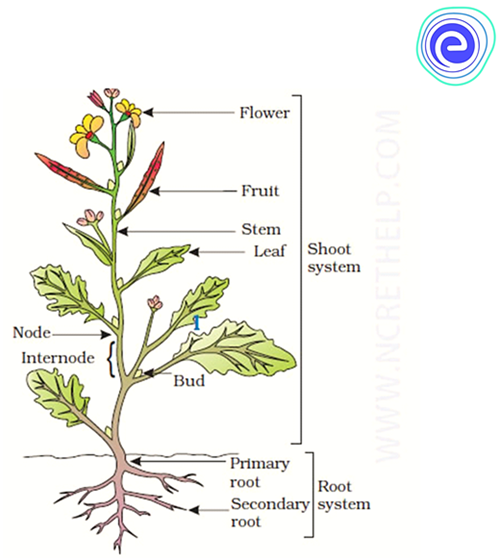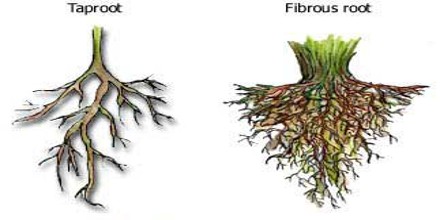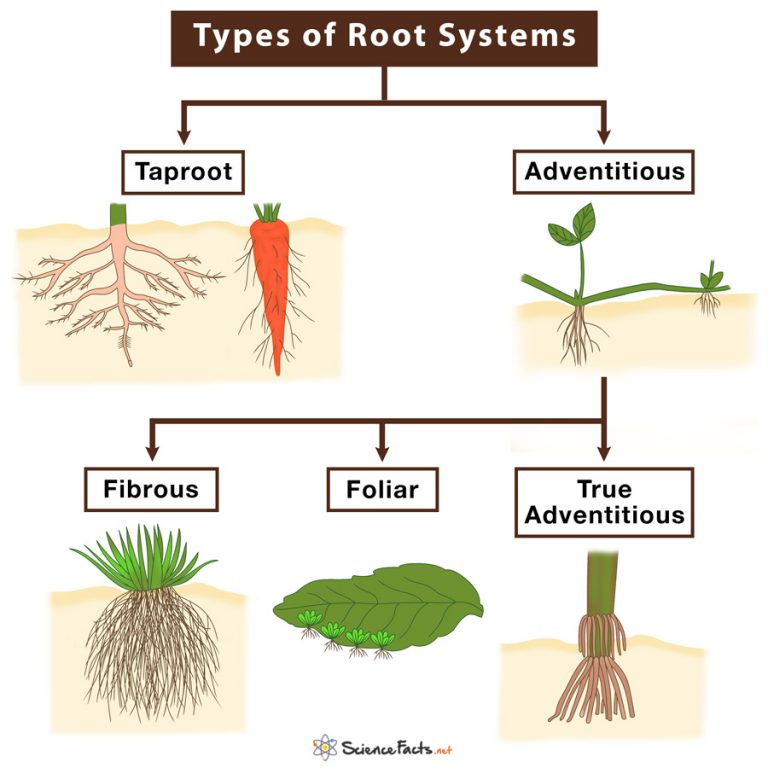CBSE Class 11 Biology Chapter 5 Revision Notes Part 1
Chapter 5: Morphology of Flowering Plants Revision Notes Part 1
Plants morphology is the study of the physical form, structure, and development of plants. It is very important for physical identification and is different from the study of plant anatomy that studies the internal structures of plants. Wilhem Hofmeister, a German botanist is called the father of plant morphology.
Definition of a flowering plant
Flowering plants are included in the Class Angiospermae or the Angiosperms. These plants bear seeds enclosed inside a fruit. The scientific name Angiosperm, comes from the Greek words “Angeion” meaning vessel and “spermae,” meaning seeds. They include 64 orders of plants found on the land, with 416 families having about 13,000 genera and 300,000 species known till today. They were called Magnoliophyta before. They differ from the gymnosperms as they produce fruits with seeds. Angiosperms have external flowers, and there is an endosperm inside the seeds.
Examples of flowering plants
Angiosperms are the most diverse types of plants within the kingdom Plantae and consist of about 80% of the various green plants known till date.
The basic three examples of flowering plants include:
- The Monocots such as the grasses, orchids, etc.
- The Eudicots such as the peas, daisies, etc
- Magnolids such as avocados, magnolias, etc.
General features of morphology of flowering plants
The distinguishing feature of flowering plants is the presence of a “flower”. It is a part of all angiosperms that consist of the male or female or both reproductive organs. They are seed-producing plants in which the fertilized egg matures into a seed within the hollow ovary enclosing it from the outside. The presence of a “fruit,” which is a ripened and mature ovary together with the other ovarian contents, is another characteristic of flowering plants. The angiosperms have developed specialized tissues to transport water (vascular Xylem) and nutrients (vascular Phloem) to all the parts of the plants. They have evolved to develop various processes needed for survival, such as photosynthesis, cell division, etc, and have specialized cells for the same. The plant body consists of:
- The root system which absorbs all the water and nutrients required by the plant.
- The stem system which supports the main body of the growing plant.
- The leaves which are the principal areas of photosynthesis occurring within the plant.
- The meristems which are localized parts responsible for the growth of the plant, especially the length.
- The cambium i.e. localized regions helping in the width growth of the plant.
The angiosperms have adapted such specialized tissues upon adaptation to terrestrial conditions and have spread extensively, unlike other plants.
The external structure of a flowering plant can be divided into a root system and a shoot system.
Root morphology
The roots are responsible for absorbing all the nutrients and water required for the growth and sustenance of the plant, and they also help in anchoring the plant firmly in the soil. There are two basic root systems in flowering plants, the primary root system and the adventitious root system.
-
The primary root system is the taproot or the primary root, which grows vertically down by positive geotropism. The taproot produces many lateral roots or secondary roots which grow horizontally inside the ground. These secondary roots produce their own smaller roots called the tertiary roots. The Eucotelydons produce taproots such as Taraxacum officinale or the dandelion.
-
The fibrous roots are a diffuse root system in which the secondary roots increase and are bigger and higher in number than the primary root. Several higher-order roots are produced, which are positively geotropic and may finally grow into similar sizes. Therefore, there is no clear differentiation between the taproot and the secondary roots in the fibrous system. It helps in shallow anchoring plants such as monocotyledons like maize, banana, rice, wheat, marigold, etc.
-
The adventitious root system consists of monocotyledons such as Bromeliaceae (bromeliads), Poaceae (grasses), Orchidaceae (orchids), etc. These plants have roots in which the primary root is short-lived and is soon replaced by the adventitious roots which arise from the stem.
Types of roots
- Besides the taproots and adventitious roots, there are more different types of roots in angiosperms that are evolved and modified according to the varying terrestrial habitat.
- Prop roots are adventitious aerial roots modified for support above the ground. These can be seen in plants such as figs and corn. Some big woody prop roots can also be seen in tropical rainforests that develop from existing adventitious roots and develop on horizontal branches.
- They give extra support and anchorage to the plant. Some contractile adventitious roots can be seen in certain bulbous plants, which help pull the plants deeper into the ground. Adventitious roots can also be seen in some climbers.
- Mangroves have specialized roots called “pneumatophores” or breath roots which are lateral roots growing upwards by negative geotropism. They help as additional sites of oxygen intake for the plants as they have a submerged primary root system, often in muddy habitats.
- There is a modification of primary and adventitious root systems in angiosperms seen in tuberous or fleshy roots like the carrots and beetroots. The taproot is modified into a food string root. The adventitious roots are modified into a tuberous root in other plants like cassava or manioc.
Sources:
Morphology of Flowering Plants. https://ncert.nic.in/textbook.php. Accessed 18 Dec, 2021.
]]>


